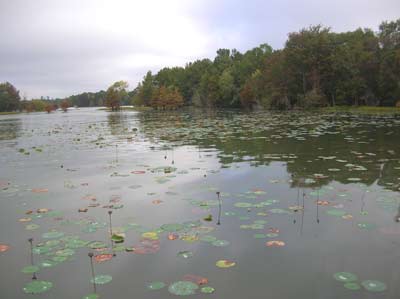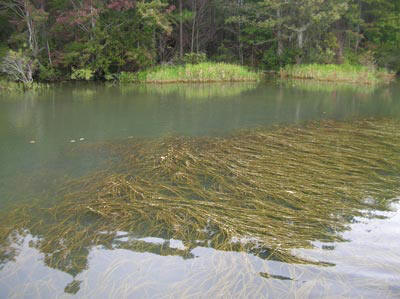Santee Cooper Grass Carp
Maintenance Stocking Summary
 From
1989-1996 768,500 triploid grass carp were stocked in the Santee
Cooper Lakes to help control the growth of hydrilla.
From 1996-2006 no carp were stocked. While
this control method provided many years of lake-wide control;
there is also a long term management strategy which includes maintenance stocking a
sufficient number of grass carp in the system to keep hydrilla
suppressed while allowing desirable native vegetation to flourish.
From
1989-1996 768,500 triploid grass carp were stocked in the Santee
Cooper Lakes to help control the growth of hydrilla.
From 1996-2006 no carp were stocked. While
this control method provided many years of lake-wide control;
there is also a long term management strategy which includes maintenance stocking a
sufficient number of grass carp in the system to keep hydrilla
suppressed while allowing desirable native vegetation to flourish.
The Aquatic Plant Management Council is committed to maintenance stocking of triploid grass carp in the Santee Cooper Lakes to provide long-term control of hydrilla. A maintenance stocking plan approved in 1999 provided for stocking a small number of grass carp to control hydrilla while encouraging the expansion of a diverse, native aquatic plant community.
The plan was first implemented in 2007 following a year of substantial increases in hydrilla and overall aquatic plant populations system-wide. The maintenance stocking plan called for increasing the grass carp population to the level at which hydrilla was last under control, which appeared to be in 2005, and maintaining that level in subsequent years. Drought conditions resulted in a decrease in lake levels to near historic lows in early 2008, so no grass carp were stocked that year. However, supplemental stocking was resumed in 2009 bringing the estimated total grass carp population to 12,000. Year end surveys in 2009 indicated another substantial increase in hydrilla regrowth (800 acres) in Lake Marion and Moultrie.
Concerned about the rate of hydrilla spread in the past three years using the current maintenance stocking plan, DNR and Santee Cooper biologists reviewed approaches in other lakes. Recent experience gained in several North Carolina lakes indicates that a maintenance stocking rate of one fish for every eight surface acres appears to keep hydrilla regrowth suppressed following initial control. If applied to Lakes Marion and Moultrie, this rate would amount to about 20,000 grass carp for both lakes combined. This target stocking rate is higher than calculated by the original stocking plan developed in 1999 but it reflects research and experience not available at that time.
Based on this new information, the Aquatic Plant Management Council, with recommendations from DNR and Santee Cooper staff, is revising the maintenance stocking plan to maintain a grass carp population of one fish per eight total surface acres (160,000 acres). This equates to 20,000 grass carp system-wide. Establishing this level will require stocking approximately 12,000 fish in 2010. Fish will be released in carefully selected locations based on the presence of hydrilla. In order to compensate for an estimated 32% annual mortality, 6,400 grass carp will be stocked each subsequent year in order to maintain the target population of 20,000. 2011 stocking will include 10,000 additional grass carp specifically to target the 400 acre increase in hydrilla in the lakes. That total number doubled from 400 acres in 2010 to 800 acres in 2011.
Lake Marion and Lake Moultrie will be carefully monitored for additional increases in hydrilla acreage. Herbicide treatments will be used to provide temporary control until results from grass carp feeding become apparent. Changes to the maintenance stocking strategy will be considered if survey results and regrowth warrant.
| For more detailed information on the previous control follow this link |

Tape Grass (Vallisneria)
has flourished
in the Santee Cooper Lakes
Web Sites for More Information
on
Population Dynamics of Triploid Grass Carp

